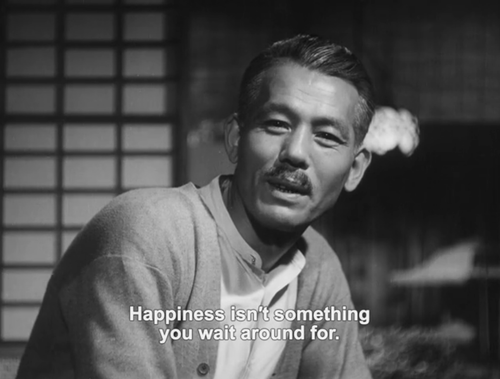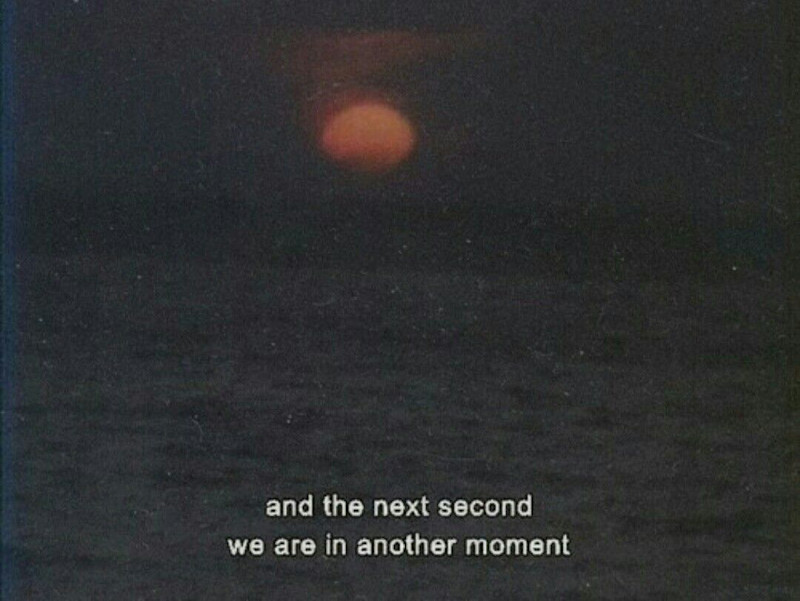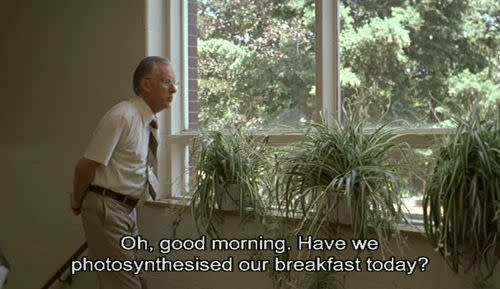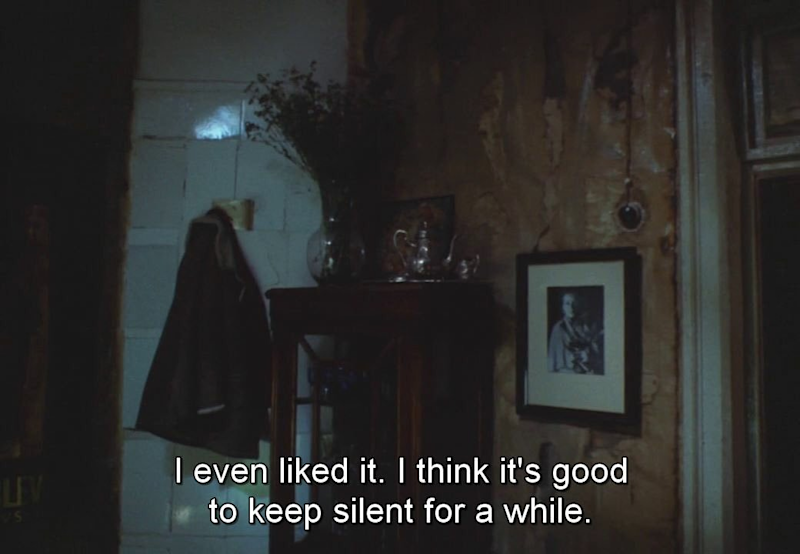Essay
The Art of Tending to Oneself
8/24/2021
Alice Otieno

How can I tend to anything when everything is falling apart?
This thought had been ruminating in my mind for much of 2020. As the world we once knew both changed irrevocably and stopped to a standstill, it almost felt like a call to go within—to check in with ourselves. For many of us, alone and sheltering in place, our thoughts were our primary companions. What other choice did we have but to tend to our innermost thoughts?
I remember having several conversations to this end when the pandemic first arrived in Europe in March of that year, but it only became more prevalent as the weeks and months went by.
In the midst of uncertainty, I found myself fluctuating between states of chaos and order, wondering how to find balance in such a tumultuous time. I found solace in gathering principles and philosophies that centered around tending to oneself. They reminded me that peace is not the absence of disorder, but rather a state of being which needs to be meditated on and refined upon. Peace is the companion that guides us through difficult times.
‘The peace that we are looking for is not peace that crumbles as soon as there is difficulty or chaos. Whether we’re seeking inner peace or global peace or a combination of the two, the way to experience it is to build on the foundation of unconditional openness to all that arises. Peace isn’t an experience free of challenges, free of rough and smooth, it’s an experience that’s expansive enough to include all that arises without feeling threatened.’ — Pema Chodron’To a mind that is still the whole universe surrenders.’ ― Lao Tzu
Tending to oneself is a virtue, and it requires consistent action, surrender to outcome, and a commitment to presentness. With this understanding at the forefront, I was able to invite in a new sense of peace, clarity, and serenity. I started using the practices, quotes, and ways of thinking that I came across to piece together a framework to guide me in refining and reflecting upon my own ways of introspection.

Let the present guide you and let you flow towards future moments.
Presentness requires sitting in your current state of feeling, reality, and emotions, and embodying them. It requires surrendering future or past thoughts and wholeheartedly embracing the current moment. It is finding solace in knowing that even if the present isn’t ideal, it is momentary and isn’t the final state of being.
Embracing that state of impermanence is at the core of the Japanese philosophy of Wabi-Sabi, which teaches us to accept the world as imperfect, unfinished, and transient, and then go deeper in embodying that reality. In fact, Wabi-Sabi finds this ever-changing state to be not only a reality to accept, but also something to find beauty and peace within.
‘Wabi-Sabi is the beauty of things imperfect, impermanent, and incomplete, the antithesis of our classical Western notion of beauty as something perfect, enduring, and monumental.’- Tadao Ando, The Wabi-Sabi House: The Japanese Art of Imperfect Beauty
As humans, we find it difficult to cede control and to embrace the unexpected. Wabi-Sabi invites us to sit with those rifts, find beauty in the impossibility of perfection, and part with the illusion of control. Ground yourself in the present moment. Become aware of the ebbs and flows that surround the human experience. Through surrendering to this knowing, we are awakened to a renewed sense of peace.

Tend to another living thing/being as they are an extension of you.
We often lean towards a desire to label things as positive or negative. We might instead learn to take things as they are and work through what we’re feeling without bias. This is one way to tend to yourself, others, or that which is around you.
Much like the Japanese philosophy of Wabi-Sabi, Buddhist teachings hone in on similar beliefs surrounding the cultivation of a peace of mind. Mindfulness resides at the core of Buddhist teachings.
“It is my conviction that there is no way to peace - peace is the way.” ― Thich Nhat Hanh, The Art of Power
It should be noted that mindfulness, as with all teachings and practices, is a tool. Mindfulness teaches us not to run away from ‘negative feelings,’ but instead to use them as an anchor to steer us to a state of balance and stability by understanding where these feelings arise from. Mindfulness is essential when tending to a person or thing—when you exert undivided attention into a process, you need to accept all that comes with it, as it is.
Taking care of plants has taught me how to be patient, savor moments of stillness, and appreciate the benefits of tending to something outside of myself. As taught in a number of eastern philosophies, tending to nature as a form of escapism or meditation helps maintain peace of mind.
I invite you all to tend to yourself or an extension of yourself today. Put aside notions of how you think things should unfold and lean into the presentness of how things are.
"The extinction of desire–or detachment–or amor fati–or desire for the absolute good–these all amount to the same: to empty desire, finality of all content, to desire in the void, to desire without any wishes. To detach our desire from all good things and to wait. Experience proves that this waiting is satisfied. It is then we touch the absolute good." – Simone Weil, Gravity & Grace

Cultivate moments of stillness
The art of stillness can present itself as being quite paradoxical in nature as one might think it quite literally involves...doing nothing. But instead, it encourages us to create sacred spaces of silence that feed into the natural flow and currents of everyday life. Silence guides us to moments of stillness and with stillness comes clarity—clarity of mind and thus clarity of movement informing future and present action. ‘Wu wei’ translated as ‘effortless action‘ is a Daoist/Taoist teaching which encompasses just that. It’s the practice of non-action which naturally progresses into action.
At the forefront of Taoist teaching is an emphasis on the ‘Tao,’ meaning the way or the path—the natural order of the universe. Tao extends beyond a philosophy, it is a practice which one must experience within their own life path as it’s through this process that we can begin accepting not only ourselves but the nature of our existence.
‘Be the silent watcher of your thoughts and behaviour. To know yourself as the Being underneath the thinker, the stillness underneath the mental noise, the love and joy underneath the pain, is freedom, salvation, enlightenment.’ — Eckhart Tolle
Through carving out moments of stillness, we allow ourselves to be guided to where we are supposed to be. Stillness paves the way for introspective and reflective spaces allowing you to go within. However, Wui wei, as with other teachings, is not one to be used single-handedly. Rather, it presents itself as a wisdom that can be applied in our ever turbulent world. It further reinforces us to surrender to the ebbs and flows rather than fight against them.
Take a few minutes today to tend to an activity which requires you to be still — whether it is a walk in nature where you can be completely absorbed in the elements or simply sitting in silence and just being present. Such moments are when we are in tune and connected to our whole being.
This piece appears in the Are.na Annual 2021, themed “tend.”
Alice Otieno is a multidisciplinary creative whose work centers around photography, writing & research. Her work seeks to explore fundamental ideas surrounding the nature of our existence — bridging the gap between intellectual thought process & creative practice.
Are.na Blog
Learn about how people use Are.na to do work and pursue personal projects through case studies, interviews, and highlights.
See MoreYou can also get our blog posts via email